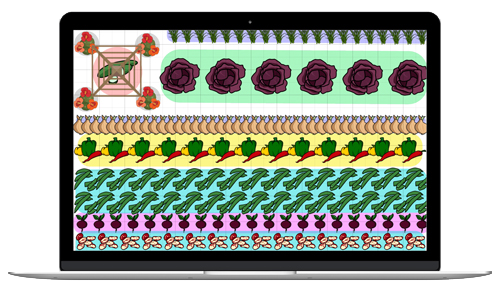
Planting, Growing, and Pruning Hydrangea
The Almanac Garden Planner - Use It Free for 7 Days!
Plan your 2025 garden with our award-winning Garden Planner.
Types
For a more detailed overview of the many types of hydrangeas, check out Hydrangea Varieties for Every Garden.
There are two main groups of hydrangeas:
Group 1: Plants that Bloom on New Growth (This Year’s Stems)
The following hydrangeas, which form their buds in early summer on new growth, will flower reliably each year, requiring no special care.
- Panicle hydrangeas (Hydrangea paniculata)
- ‘Grandiflora’ and ‘PeeGee’ are large old-fashioned, floppy varieties; ‘Tardiva’, ‘White Moth’, and ‘Pee Wee’ fit the scale of small gardens. ‘Limelight’ produces cool-green flowers and grows to a height of 6 to 8 feet.
- Smooth hydrangeas (H. arborescens)
- Look for the cultivars H. arborescens ‘Grandiflora’ and ‘Annabelle’, which produce many large (up to 14 inches across), tight, symmetrical blooms in late summer.

Group 2: Plants that Bloom on Old Growth (Last Year’s Stems)
If you live in Zone 8 or warmer, choose plants from this group. Gardeners in cool climate zones will find many of them a challenge, because they set flower buds in the fall. Although hardy to Zones 4 and 5, the buds are prone to damage by an early frost in fall, a late frost in spring, or excessively cold temperatures when dormant in winter. This, along with untimely pruning, can result in inconsistent or no flowering.
- Oakleaf hydrangeas (H. quercifolia)
- You can expect an exceptional fall color from ‘Snow Queen’, ‘Snow Flake’, and ‘Alice’.
- Bigleaf hydrangeas (H. macrophylla)
- We love ‘All Summer Beauty’ (mophead), which has profuse, dark blue flowers that turn pinker in soils with near-neutral pH. If buds are winter-killed, the plant will form new ones in spring and still bloom.
- ‘Nikko Blue’ (mophead) is vigorous, with large, rounded, blue flowers.
- ‘Blue Wave’ (lacecap) produces rich blue to mauve or lilac-blue to pink flowers.
- ‘Color Fantasy’ (mophead) has reddish or deep purple flowers and shiny, dark green leaves. It grows to about 3 feet tall.
- Mountain hydrangeas (H. serrata)
- ‘Bluebird’ and ‘Diadem’ are early bloomers. In acidic soil, ‘Preziosa’ produces blossoms of an extraordinary blend of pale shades of blue, mauve, violet, and green.
- Climbing hydrangeas (H. anomala ssp. Petiolaris)
- ‘Firefly’ boasts variegated foliage.
ADVERTISEMENT
how can you change color to purple
Acidic soils cause hydrangeas to bloom blue (soil pH below 5.5). You can apply aluminum sulfate or sulfur to lower soil pH (broadcast half a cup of wettable sulfur per 10 square feet and water in). To gradually change flower color from pink to blue, broadcast half a cup of wettable sulfur per 10 square feet and water it in.
It’s even better if you can drench the soil. For example, dissolve one tablespoon of aluminum sulfate in one gallon of water, and then drench the soil around the plant in the spring. (Avoid the leaves, and get at soil level).
We put in four very nice dwarf Hydrangea bushes in 2011 and they have done very well until this when three had mostly orange leaves. We've had a normal growing season in western North Carolina and all our other plants have done well. What happen and how do I correct this problem?
We planted four dwarf Hydrangea bushes in 2011 and they have done very well until this year when three of them now have mostly orange leaves. We've a good growing season in western North Carolina and all our other plants are very healthy. What has happed to these plants and what can I do about it.
I pruned my hydrangeas improperly last year and while the plant thrived and grew, I had no blossoms. This year I allowed the dead wood to remain all winter and in early spring I had new green leaves in the old wood stems. Then, suddenly the new green shoots died and dried up. I pruned the wood back to the base at that time, the plant is now thriving well but I have no blossoms again. I wonder why the new green died so suddenly. Help!
It is hard to say why the new stems died off, perhaps they were bitten by a cold snap while they were still tender. However, it is likely you don’t have blooms because you cut the old wood back to the base—those were the branches that would have produced blooms. You want to keep year-old wood for a few seasons before removing it. The new growth, as it ages, will take its place. That is how you keep hydrangeas blooming—they should always have a mix of older branches and first-year growth.
Please could you advise on what might be wrong with two hydrangeas which are currently in a pot (each). They are wilting and the leaves dying. I would be most grateful for any assistance.
It is hard to say for sure, but you might be over watering (wilting and drooping foliage is often a symptom). Providing good drainage is key to growing hydrangea in pots.
My hydrangea is new this year. There are buds-blossoms ready to open, but only a few on each head have opened. What do I do?
Fertilizer might be the ticket. Try getting it on a bi-weekly schedule to see if you can encourage those buds to open.













